Introduction
This page was started because of an email that Ken Booth sent me in July 2001. This was followed by an email from John and Carol Chamley, who collect badges, in October 2004.
Ken's email was used as part of the page about the crew of HMS Gambia and in it he said that...
I did have a strong connection with Peanut, it being the Peanut Club, started during the WW2 to support Sir Archibald McIndoe, the Plastic Surgeon who rebuilt the faces etc. of servicemen burnt in action. The badges that I sold for one shilling were small yellow discs with an unshelled peanut on it. I sold hundreds of these on many ships and in pubs all over the place. It was a crime to be found without your badge on you, so much so that when you went for a shower the lads would keep them in their mouths! After selling so many hundred I would get a Peanut Medal, this was a peanut hanging on a bar on a ribbon, there were five different colours of ribbon until you got to the top which was a Gold peanut, which I still have. I also like peanut butter!!

Peanut Club badge and medals
Photo courtesy of Ken Booth
Following the email from John and Carol, asking about the Peanut Club, I decided to do a little research into both it and the Guinea Pig Club.
Can you Help?
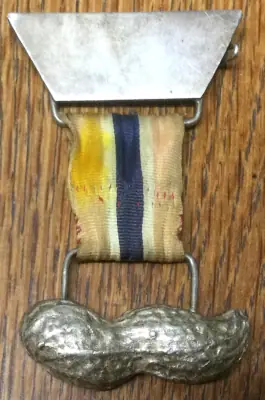 In December 2004, I was sent this picture. Can you identify this as a peanut club badge? Do you know what the ribbon means, if anything?
In December 2004, I was sent this picture. Can you identify this as a peanut club badge? Do you know what the ribbon means, if anything?
The Peanut Club
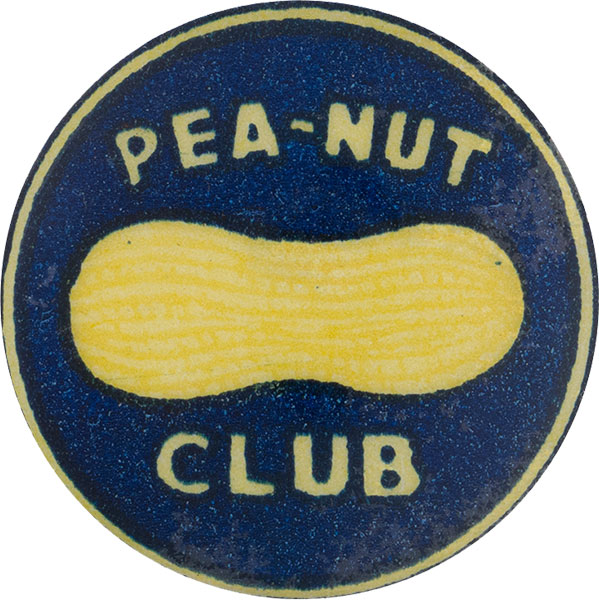
Peanut Club badge
Photo courtesy of John and Carol Chamley
The original Queen Victoria Hospital NHS Trust website (Internet Archive) said that funding for the Kent and Sussex Hospital was started in 1931 when Mrs. Gordon Clemetson, writing as "Aunt Agatha", started the Peanut Club, the children's section of a local newspaper. Mrs. Clemetson promised a bag of peanuts to anyone giving 12 new pennies to the Hospital Fund.
This would have been around the same time as groundwork was started for the present Queen Victoria Hospital. This hospital replaced two previous cottage hospitals and was opened in 1936.
J. P. Bennett's "A History of the Queen Victoria Hospital, East Grinstead" says that...
The hospital had long needed a children’s ward and the money for this project had been raised by the Peanut Club. This curious and typically British affair had been born in 1931 in connection with a special appeal which was being held in Tunbridge Wells to raise money for the new Kent and Sussex Hospital. A comic newspaper called "Glad Rag" was produced by journalists. Mrs Clemetson wrote in this paper an intended parody on a children’s feature called the Peanut Club, offering a bag of peanuts to anyone who gave twelve 1931 pennies to the hospital funds. She signed the piece "Your adoring Aunt Agatha". To everyone’s astonishment a little girl presented herself together with twelve pennies at a local bank and demanded a bag of peanuts. It was quickly realised that if one child had taken the suggestion seriously no doubt many more would do the same. Within 7 years £14,000 had been raised for the Tunbridge Wells Hospital and McIndoe [Sir Archibald Mclndoe], seeing the possibilities, asked Aunt Agatha, about raising funds for a children’s ward.
Jean Rice, writing in the now gone (December 2004) Ireland GenWeb website in February 2003, gave an account of the Peanut Club, written by Miss M. C. L. Longley of Tunbridge Wells, Kent in June 1998. Apparently the Peanut club was started as a sort of joke as the article says that...
Local journalists produced a fun paper at a special event to raise money for the Kent & Sussex Hospital, Tunbridge Wells. One young journalist, signing herself "Aunt Agatha," promised a bag of peanuts to any child who donated a dozen "Bun" pennies to the cause (a "bun" penny was one bearing Queen Victoria when she wore her hair in a bun). One child did just that, so Mr. W. R. Murray, Managing Director of the "Kent and Sussex Courier," decided others could do the same and so the Pea-Nut Club was born. Miss Longley was a made a member (no. 2087) in April 1932. Every week for many years "Aunt Agatha" wrote a letter to the children of the Pea-Nut Club in the "Kent and Sussex Courier."
"Aunt Agatha" went on to become Mrs. Gordon Clemetson, Editor-in-Chief of the same paper. To celebrate £25,000 being raised for the Kent & Sussex Hospital since the club began in May 1930, a Service of Thanksgiving was held in Christ Church, Tunbridge Wells, on 6th September 1942. So many people were expected to want to attend that it had to be by ticket only. Not only did children become members, but also their relatives, friends and pets - in fact anyone and anything so long as the membership money was paid!
Miss Longley's father made his bicycle a member, calling it "Old Faithful" as he used it day and night to get him to and from work. HMS Revenge was the first ship to help in a big way, raising £500 to buy a hospital cot. Several RAF Squadrons also joined. Eventually the club became so large that it it had to have two paid staff. At one time the Pea-Nut Club kept the "Magic Cupboard" on the children's ward stocked with books, puzzles, games, etc., and when child patients were discharged they received a present from it. After the war Sir Archibald McIndoe asked for the interest to be revived to work for the plastic surgery unit at the East Grinstead Hospital. At one time there were at least 350,000 members all around the world.
The idea of the Peanut Club was to collect small sums of money from an enormous number of people. The club became very successful and the Peanut Club badges soon replaced the peanuts. In 1936, the club was extended to help the Queen Victoria Hospital at East Grinstead and the club has continued to provide amenities to the hospital outside the scope of the National Health Service. The Emergency Medical Service wanted to set up four specialised units around London to provide treatment for war casualties with facial injuries and burns. Sir Archibald McIndoe arrived at the QVH on 4th September 1939, to set up one of the units.
The following article appeared in the Pea-Nut Corner, Kent & Sussex Courier, Friday, 6 January 1939:
The Pea-Nut Club, whose members made the children's ward of the new Kent and Sussex Hospital their special responsibility, was started almost by accident but caught on to become one of the most successful ideas ever launched by a newspaper. In 1931 when Courier journalists were each asked to write something for a special fund-raising edition young Katie French dashed off a spoof letter signed Aunt Agatha offering a bag of peanuts to any child who could produce 12 Bun Pennies, showing Queen Victoria with her hair in a bun. Miss French, confident that nothing more would be heard of such an absurd idea, was startled the following Friday to be called in by the managing director William Murray, who had a call from the firm's bank manager saying he had a little girl in his office carrying a bag of Bun Pennies and what was he to do about it? Mr Murray insisted the reporter's challenge must be met, and so the Pea-Nut Club was formed with the paper's youthful Aunt Agatha at its head.
Borne on by Aunt Agatha's skill and enthusiasm, the idea caught the public's imagination. Soon the objective of funding a children's bed in the new hospital expanded into furnishing the whole ward. By 1933 the Pea-Nut Club had 9,000 members, including 22 sailors in the battle cruiser Revenge, flagship of the Mediterranean Fleet, recruited by Club Elder Cousin Charles Bowles. His Pea-Nut honeycomb (or branch) met in one of the warship's gun turrets and sailors challenged each other to show their bright little blue and gold badges - worn on a sock under bell bottom trousers because only official Royal Navy insignia were allowed on the uniform.
Every week for many years "Aunt Agatha" wrote a letter to the children of the Pea-Nut Club in the Kent and Sussex Courier.
"Aunt Agatha" went on to become Mrs. Gordon Clemetson, Editor-in-Chief of the same paper. To celebrate £25,000 being raised for the Kent & Sussex Hospital since the club began in May 1930, a Service of Thanksgiving was held in Christ Church, Tunbridge Wells, on 6th September 1942. So many people were expected to want to attend that it had to be by ticket only. Not only did children become members, but also their relatives, friends and pets - in fact anyone and anything so long as the membership money was paid! Miss Longley's father made his bicycle a member, calling it "Old Faithful" as he used it day and night to get him to and from work. HMS Revenge was the first ship to help in a big way, raising £500 to buy a hospital cot. Several RAF Squadrons also joined. Eventually the club became so large that it it had to have two paid staff. At one time the Pea-Nut Club kept the "Magic Cupboard" on the children's ward stocked with books, puzzles, games, etc., and when child patients were discharged they received a present from it. After the war Sir Archibald McIndoe asked for the interest to be revived to work for the plastic surgery unit at the East Grinstead Hospital. At one time there were at least 350,000 members all around the world.
The idea of the Peanut Club was to collect small sums of money from an enormous number of people. The club became very successful and the Peanut Club badges soon replaced the peanuts. In 1936, the club was extended to help the Queen Victoria Hospital at East Grinstead and the club has continued to provide amenities to the hospital outside the scope of the National Health Service. The Emergency Medical Service wanted to set up four specialised units around London to provide treatment for war casualties with facial injuries and burns.
It didn't matter who or what became a member of the Peanut Club. The 13 April 1934, Courier reported that "Polly" had become a parrot member. The parrot lived at The Handy Shop, 83 Albion Road, Tunbride Wells, Kent. It was not just parrots and bicycles, the Children's Newspaper of 3 July 1954 reported that two Bristol Freighter aircraft had been enrolled:
SIXTEEN-TON PEANUTS
The famous Peanut Club has some strange members on its roll; The latest additions are two 16-ton. Bristol Freighters of the cross-Channel air ferry.
The Club, which was founded before the war, now has well over one million members throughout the world. The cost of membership is one shilling, and the subscriptions go towards the upkeep of the Queen Victoria Plastic Surgery Hospital.
FUNDS FOR NEW WARD
Funds from the Peanut Club were recently donated towards the cost of building a new £27,000 Children’s Wing for the hospital and now members, who arc joining at the rate of 1500 a week, arc helping to equip the Wing.
Not long ago Donald Sylvester, 14-ycar-old schoolboy of East Grinstead, decided to enrol as members "Victor Baker" and "Victor Charlie," the two oldest Bristol Freighters in existence. Donald, with three other Peanuts, won a newspaper competition for an essay on Fying. The prize was a trip to France for the day, and so he enrolled the planes he flew in during his trips out and back across the Channel.
It is difficult to imagine how popular the Peanut Club was. On 4 August 1938, the Kentish Cat Society held their annual show at in the Pump Room, Tunbridge Wells. The next day, the Kent & Sussex Courier wrote:
We acknowledge with very grateful thanks a cheque for £8 3s 6d from the Kentish Cat Society, being the entrance fees in the special classes run in aid of our Hospital funds. The Cat and Kitten Show was held yesterday (Thursday) at the Pump Room. I must confess I was highly delighted with such a splendid cheque, and I think it most kind of the promoters to have arranged classes in aid of our funds. But when I heard from Mr. R. V. B. Perkins, the show manager, that most of this money had come in from far-off competitors who had probably never heard of the Pea-nut Club, I was a bit disappointed. I had so hoped that the pump Room would be full of real Pea-Nut pussy cats. But instead, only about 18 or 20 were entered from the ranks of the club. If we are given a chance another year, I hope we shall make a much more impressive show than this, and carry off most of the prizes.
The Peanut Club class at the cat show was won by Master Wenham.
In 1947, the National Health Service was formed, and attempts were made for the money raised by the Peanut Club to be added to the general pool. These attempts were successfully repelled through the work of Sir Archibald and others. The children's unit was opened in July 1955 by the Queen Mother and christened "Peanut Ward."
As well as the ribbons awarded to Ken Booth there were other gifts and prizes. A small tankard was awarded to the child who had collected the most bun pennies in a year.
The Peanut Club is a worldwide organization, and the the attempt by the Ministry of Health to add the Peanut Club funds to the general pool sparked outrage around the world amongst their loyal members. An example can be found in the January 1952 (Volume 3, No. 10) newsletter of 458 Squadron, Royal Australian Air Force...
PEANUT CLUB
Members will recall the Peanut Club as the organisation formed to raise money for the Queen Victoria Hospital, East Grlntead, (the plastic surgery centre in England). Gus Charlwood introduced most of us who were with 458 at Bone and thereafter to membership of the club. The squadron raised enough money to endow a bed in the proposed children’s ward.
Subsequent developments for the fund seem to have been unhappy. Three squadron members in England (Dick Rutter, Harry Eastwood and Peter Pettit) have drawn our attention to an editorial in the London Sunday Express about the Peanut Club funds. This is too long to reproduce and, being efficient journa11em, not easy to condense, but it appears that in all £24,000 was raised for the ward and after the nationalisation of British hospitals continued to be held in trust for its original purpose of endowing the children’s ward. Now, it appears, the British Ministry of Health has claimed the money for its General Endowment Fund — from which all British hospitals are financed. The Sunday Express editorial, which is headed "Plain Robbery" includes these words about the affair:
"Money poured in … All the Services, deeply grateful for what the Hospital had done for their men gave generously. The Navy, Army and Air Force each contributed the coat a cot so did R.A.F. Squadron 458. [This is a typo in the original newspaper article, it should have been R.A.A.F.] … In 1949 it (the Peanut Club) assured the new State Management Committee that the money was still available for its original purpose whenever needed … Now, suddenly, the Trustees have received a curt letter … the letter states, without a word of thanks, gratitude or simple human understanding, that, under the National Heath Act, the money belongs to the Ministry of Health … As for the Queen Victoria’s Children’s ward, the writer of the letter adds curtly 'the cost of that, if and when built, will be borne by the Exchequer.’
Meanwhile, the Children’s ward of the Hospital remains a temporary hut with 14 cots crushed into a space suitable only for eight, and according to one of the surgeons, in a state of dilnp1dat1on without equal in a good hospital."
The Squadron Committee in N.S.W. [New South Wales] has written to the Ministry of Health in Britain. As it is probable that not many of the other major contributors, particularly the service units, are now in a position to express their views, the Squadron may be thought to speak for the donors to the Peanut Club as a whole. This is the Letter.
The Minister of Health.
Dear Sir,
A proposal understood to emanate from your department has been brought to the attention or the Committee of this squadron that the funds collected by the "Peanut Club" organisation of the Queen Victoria Hospital, East Grinstead, England, should be compulsorily transferred to your Ministry’s General Endowment Fund.
Wartime members of this Squadron were substantial donors to the "Peanut Club" funds on the clear understanding that these funds were to be used for the endowment of a Wing of the Queen Victoria Hospital.
The Squadron Committee instructs me to inform you that Squadron members strongly object to the funds being used for other purposes than those for which they were subscribed.
The club provided funds for the Peanut Ward at QVH, East Grinstead. The Children's Fire and Burn Trust was still raising funds and selling Christmas cards for the Peanut Ward and still going strong in 2018, but now appears to be closed (December 2024).
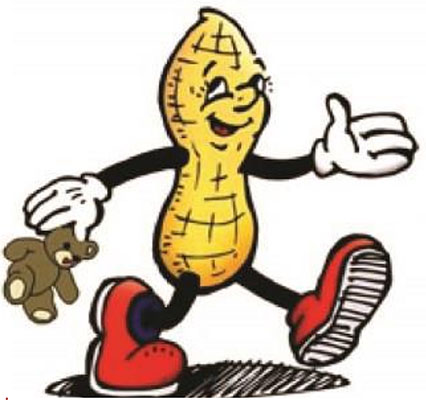
A more upbeat peanut from the 2018 Peanut Assessment Unit Leaflet.
I can no longer find any copy of the leaflet online (December 2024)
Bun Pennies
Queen Victoria was born on 24th May 1819, she became Queen on 20th June 1837, and was crowned on 28th June 1838. She ruled for 63 years, until her death on 22nd January 1901, Britain's longest reigning monarch. Not surprisingly, the image of her used on coins changed several times. The "Bun" pennies were minted between 1860 and 1894 with details of the design changing several times. Some of the designs are very much more valuable today than others.
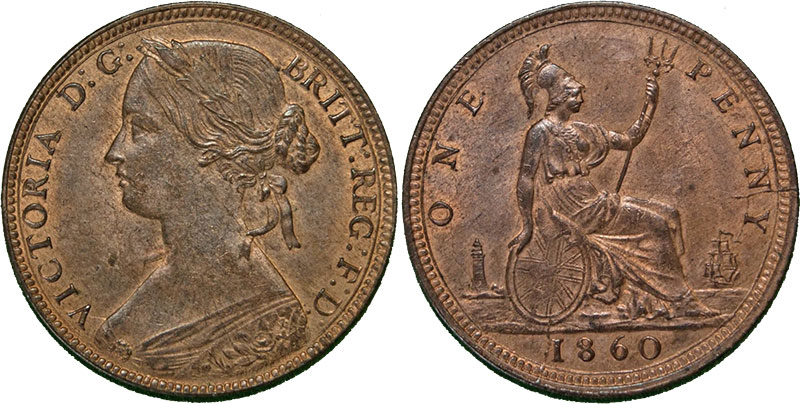
1860 "Bun" Penny
Many people kept their Peanut Club badges among their prized possessios. One such was Flight Sergeant Peter Jezzard, of 622 Squadron, Royal Air Force Volunteer Reserve. Jezzard was killed when his Wellington crashed into the North Sea whilst on a Navigation Excercise, on 5 April 1948.
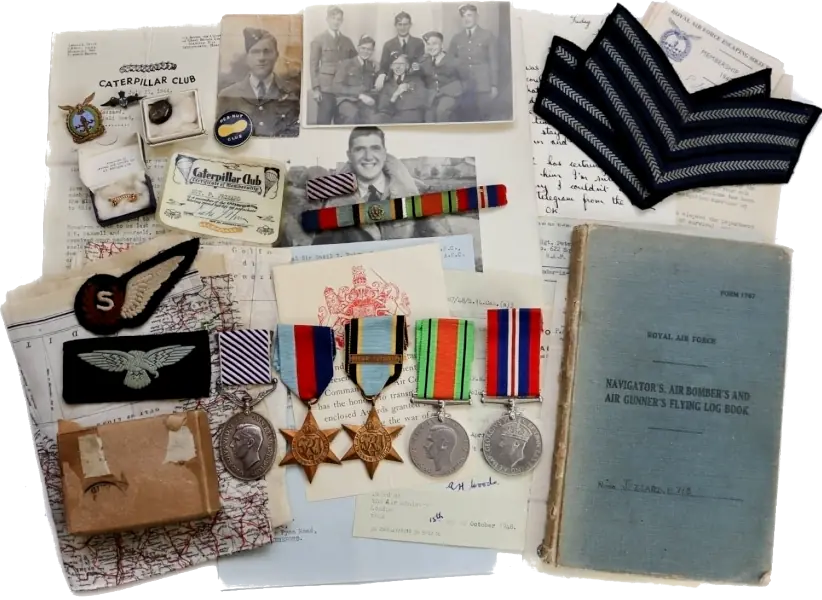
Military effects of Flight Sergeant Peter Jezzard
Image: Cultman Collectables
Plastic Surgery
The "plastic" in plastic surgery comes from the Greek "plastikos" which means to mould, shape or give form. Plastic surgery includes both reconstructive and aesthetic qualities. There is some evidence that there were treatments for facial injuries around 4,000 years ago. As early as 800BC doctors in India were using skin grafts for reconstructive surgery. In Virginia, in 1827, Dr. John Peter Mettauer performed the first cleft palate operation in America.
It was the terrible injuries inflicted by warfare in the late 18th and early 19th centuries that gave surgeons the impetus to find new and innovative methods of reconstructive surgery. It was the scale and seriousness of injuries inflicted during World War I that really gave surgeons on both sides of the conflict the will and resources to develop new, ingenious and specialized treatments and modern plastic surgery was born.
During this time several surgeons came to prominence in the field. Among them were Harold Delf Gillies, born in New Zealand and trained in Britain as an otolaryngologist (ear, nose and throat specialist); Vilray Blair, an orthopedic (skeletal system, its joints, muscles and associated structures) surgeon from St. Louis; Robert Ivy, a general surgeon from Philadelphia; Lee Cohen, an American otolaryngologist who studied in Europe; and Varaztad Kazanjian, an American immigrant who studied dentistry at Harvard Dental School and worked on the staff at Massachusetts General Hospital.
Gillies served with the British Army and worked at a hospital in Rouen, France and was particularly interested in reconstructive surgery. Early in the WWI, he was chosen by eminent surgeon Sir Arbuthnot Lane, head of plastic surgery at the Cambridge Military Hospital, Aldershot and one of the founders of the Queen Mary’s Hospital in Sidcup, Kent, which opened in august 1917, to run the reconstructive treatment centre at the Queen’s Hospital. Gillies trained many surgeons at the hospital and was later knighted for his work.
By the end of the war, 11,572 major facial operations had taken place at Queen's Hospital. When World War II threatened, in 1939, Gillies began organizing hospitals again. The Emergency Medical Service was set up with hospitals out of London selected to deal with the anticipated problem of hundreds, if not thousands, of badly burned and injured people. One of them was the Queen Victoria Cottage Hospital, East Grinstead.
In 1930, Sir Harold's cousin and fellow New Zealander, Archibald McIndoe became clinical assistant in the Department of Plastic Surgery at St. Bartholomew’s Hospital. In 1938, McIndoe was appointed consultant in Plastic Surgery to the Royal Air Force. On the outbreak of the war in 1939, he selected the Queen Victoria Hospital at East Grinstead as his base. He specialized in the care and treatment of badly burned and injured RAF crews, and the Guinea Pig Club came into existence. In 1947 McIndoe was also knighted for his work.
The Guinea Pig Club

Guinea Pig Club logo
The club was formed in 1941 and so named because, although some of the techniques were tried during World War I, McIndoe wanted to improve on them and try new ones. By the end of the war there were 649 members of the club; 57% were British; 27% were Canadian; 8% were New Zealanders; 8% were Australian. Despite the pain and seriousness of their injuries, these men never lost their sense of humour, hence the name "The Guinea Pig Club" and in some ways this was reflected in the way it was run. As the Queen Victoria Hospital page about the club puts it, "The Secretary was a pilot with badly burned fingers, which meant he was excused from writing many letters. The Treasurer was a member whose legs were burned, this ensured he could not abscond with the funds!"
It's no wonder many servicemen contributed to the Peanut Club, J. P. Bennett's "A History of the Queen Victoria Hospital, East Grinstead" says that...
The Guinea Pig Club was born, so it is said, out of the Sunday morning hangover after a "grogging party" which most of the occupants of Ward III had earned on the night of July 9th, 1941. It was decided to form a "grogging club" the minutes of which were headed "The Maxillonian Club whose members call themselves Guinea Pigs." There were three classes of membership, Guinea Pigs (patients), Scientists (medical staff) and the Royal Society for the Prevention of Cruelty to Guinea Pigs (friends and benefactors).
The burns sustained by pilots were horrific because of the placement of the fuel tanks. Bennett goes on to say that...
The Spitfire had two fuel tanks, one above the other in front of the pilot: the top tank held 48 gallons and the bottom one 37 gallons. If a Spitfire caught fire the pilot had little chance of survival unless he could get clear in a matter of seconds. The Hurricane had 33 gallon tanks in the wings, one on each side of the centre section, and a reserve tank behind the instrument board holding 28 gallons. When a wing tank in the Hurricane caught fire the flames swept into the cockpit and the reserve tank eventually blew up.
Bennett goes to on say that more than 20,000 men of the RAF had been "incinerated" during the war. It is perhaps fitting that Queen Victoria Hospital has rest areas named after some famous, and for many of their pilots and groundcrew infamous, planes such as the Spitfire Restaurant, Hurricane Café and Lancaster Lounge.
The Guinea Pig Club ended up with 649 members by the end of the war. The last surviving member of them was Jan Stangryciuk, who was born in eastern Poland in 1922. He had suffered burns to his face, scalp and hands after the Wellington Bomber he was flying malfunctioned and crash-landed in November 1942. He died on 22 October 2023, aged 101.
There is a memorial to the members of the Guinea Pig Club in the National Memorial Arboretum at Alrewas, Staffordshire which was opened on 2 November 2016.
Other Peanut Clubs
Peanut clubs, a loose community of friends or associates date from the 1860's but these were nothing to do with Queen Victoria Hospital.
One example of a 1860s Peanut Club appeared in New York's Frank Leslie's Illustrated Newspaper of 11 September 1886.
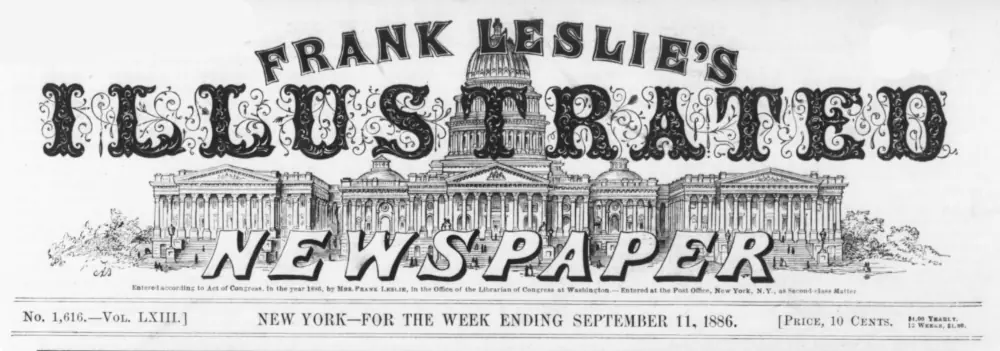
The article reads:
HUMORS OF THE PEANUT CLUB
Mr. Amos J. Cummings writes as follows of the Peanut Club of New York: "The has been in existence nearly twenty years. Its first President died last Spring. He was Mr. Amadeo Vatable, a well-known Freneb shipping merchant. Mr. Vatable was wealthy, and one of the most genial of men. He was as rotund as a Fall pippin, but by no means as seedy. He dressed in exquisite taste, and was a favorite with the ladies. He caught the idea of the Peanut Club in Marseilles. where, when a young was a member of an organization fully as unique. He organized the club in this city. Its members all carry ivory peanuts inscribed with their names.
Whenever and wherever they meet, if one exhibits his peanut the other must follow suit under penalty of $5 fine. The fine formerly only $1 but so many Wall Street men became members, that five years ago it was raised to $5. At any hour of the day or night, under any circumstances, if one peanut is shown, all members within hailing distance must return the compliment- The fines are booked, and collected at stated intervals, and are spent in recherche banquets. Such men as James R. Keene, Wash E. Conner, Frank Osborn, Charlie Bemeisler, Channeey M. Depew, James W. Husted, Charles E. Loew, Casimir Thoron, Napoleon L. Thieblin. Senator Gibbs, Herman Oelrichs, Rufus Hatch, Buck Honston, Frank Allen and G. K. Lansing are among the members of the club.
The Yankee members very quickly proved too smart for the Cheery French gentleman. For years his fines furnished exquisite entertainments. All sorts of games were played on him. He went to Washington in 1876 to secure legislation in favor of a commercial scheme. At 1 A. M. he was quietly sleeping in Willard's Hotel, when there was a ringing cry of Fire at his door. He bounced into the corridor in his night-shirt:- there stood foxy Rufus Hatch arrayed in evening dress. With charming grace a nonchalance he shoved an ivory peanut under the nose of Vatable. The French gentlema, of course, could not respond, and submitted to his fine with Christian resignation. One day Charles E. Loew invited Mr. Vatable to ride. Loew had a spanking team of trottes. Vatable was as crazy over fine horses as General Grant. He took the ribbons, and the span sped along at a two-minute gait. At the height of their speed they took fright at a Jerseyman. Vatable braceed himself against the dashboard and seesawed right gallantly. At the acme of his tribulations, however, the inevitable peanut appeared under his nose. He dared not drop the reins, and his Christian resignation again came into play. The fine oozed from his pocket Without a murmur. Wash Connor once took him on a short cruise on his yacht. Vatable was in ecstacy. But in an evil hour he was inveigled aloft. The dancing masts swung him hither and thither over the waves. He clung to the rigging like a coon in a hnrricane. At this awful moment Conner placed a peanut before his eyes. It was effective. Vatable dared not lose his hold for a second, and afterwards be paid his tine with silent regret.
On Evacuation Day Mr. Vatable got caught in a crowd on Broadway. He was wedged in so tight that his feet scarce touched the pavement. His hands were pinned to his sides. He could scarcely breathe - much less move. In this predicament he was discovered by Jake Hess. In au instant Hess produced his peanut with a sarcastic smile. The old Frenchman struggled in vain. He was forced to nod his head in acknowledgement of the fine, which was booked with remorseless rigor. Five years ago Mr. Vatable was spending a hot Summer day at Long Branch. Warren Leland persuaded him to go in snimming. The temperature of the water was delightful. The Frenchman swam hand-over-hand, tried it dog and frog fashion, and finally turned upon his back and drifted towards Sandy Hook in dreamy languor. Suddenly he heard a noise like the spouting of a porpoise. It was no porpoise. It was Warren Leland. His fat hand flourished a peanut in the air within a foot of Vatable's head. Warren had carried his own ivory pod in his mouth.The genial Gaul exercised his usual Christian resignation, and was docked as usual. That night the Frenchman returned to rest filled with good cheer and virtuous resolutions. At midnight there was a knock at his door. A telegram of importance was announced. The bearer was shown into the parlor. Within twenty seconds Vatable appeared, clad in a flannel nightcap and a Crittenden chemise. The telegram was produced. It was bogus. But there nothing bogus about the peanut. That called for $5, aud it got it. The amiable Vltable again retired, but cheerful temper and virtuous resolutions had vanished.
Some years ago there was a jam at the elevated railroad station near Hanover Square. The cars, station, stairs, street, ticket-agents and conductors were full. Vatable stood at the foot of the stairs. Within two hours he reached the platform. He caught the railing of the hind car, and moved towards Franklin Square suspended between heaven and Pearl Street. The Hon. James Oliver saw his situation, and whipped out his peanut. At ihe same moment the conductor asked for the Frenchman's ticket. Vatable acknowledged the corn in both cases. The ticket was collected and the tine recorded. One day, however, he saw real trouble. A job was put up, and he was robbed of his peanut by an expert pickpocket. The news quickly spread among the members of the club. He was waylaid at every corner. By a provision of the by-laws, on losing his peanut, no member can secure another ere the lapse of forty-eight hours. That day the club became richer by hundreds of dollars. Towards nightfall, however, Vatable fled to Hoboken,and went into exile. Two days afterwards his friends paid him amende honorable by giving him a gold peannt studded with diamonds. At his death he willed it to Casimir Thoron, who carries it to this day.
Golden Wonder snacks had a Peanut Club during the 1960's and 70s. Badges such as the Leo Reynolds' collection on Flickr could be sent for. Various designs were available such as Chief P'nut, I'm the P'nuttiest, P'nut 1st Class, Princess P'nut, Spaceman P'nut, Super P'nut, and others.
Sources & Resources
Several of the original sources have disappeared since this page was first written. Where possible, I have linked to the old pages on the Internet Archive. Unfortunately many web pages do not last a year before they are moved or deleted and many entire websites barely make it to 3 three years before they are gone. If the links on these pages do not work, try searching for them in the Internet Archive.
458 Squadron, Royal Australian Air Force Newsletter, January 1952 (Volume 3, No. 10). I have also made the newsletter available here.
1950s Pea-Nut Club Life Membership Hospital Charity - Atlas Antiques
A History of the Queen Victoria Hospital, East Grinstead by J. P. Bennet, British Journal of Plastic Surgery (1988). 41, 422-44. I have also made the paper available here.
Czech Guinea Pig Members (Internet Archive)
East Grinstead Museum - links to articles about Queen Victoria Hospital
East Grinstead Museum Facebook Page - Image of a tankard awarded to the child who had collected the most bun pennies in a year.
Flt Sgt. P. Jezzard, 622 Sqdn, Royal Air Force Volunteer Reserve - Cultman Collectables
Guinea Pig Club - Historic UK
Guinea Pig Club - Wikipedia
Guinea Pig Club - Rebuilding Bodies & Souls - East Grinstead Museum
Humor of the Peanut Club - Frank Leslie's Illustrated Newspaper, 11 September 1886
Memories Local Shops - Ravenswood Avenue
Pea-nut Club, The Peanut Club - Badge Collectors Circle
Pea-nut Club's Grand Work - Children's Newspaper, 14 May 1960
Queen Victoria Hospital Heritage - A very short history ofthe hospital but some fantastic links to more.
Queen Victoria Hospital: Guinea Pig Club (Internet Archive)
Queen Victoria Hospital NHS Trust (Internet Archive)
Reports from Early British Cat Shows 1938 - Messybeast Portal
Sixteen-Ton Peanuts - The Children's Newspaper, 3 July 1954
The Guinea Pig Club - Charing Cross Collectors Market
The Peanut Club - Charing Cross Collectors Market
The Queen Victoria Hospital Centenary 1863-1963 - Queen Victoria Hospital